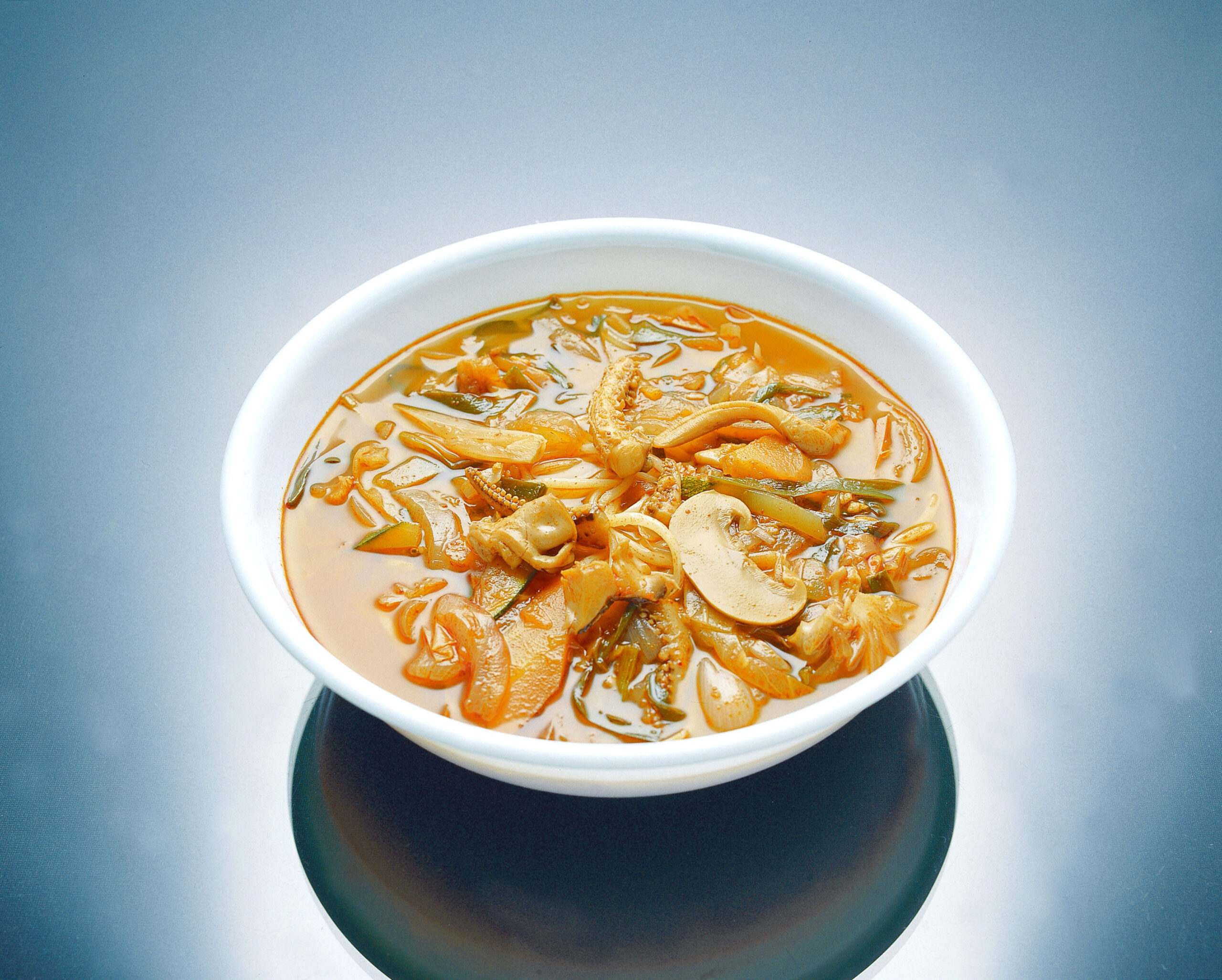Making soup is simple, but simple doesn’t always mean fast. Some recipes have a few ingredients, while others take a huge amount of preparation.
The choice of the type of broth is going to dictate how much time you need to spend with raw ingredients, typically requiring a repeating pattern of washing, peeling, chopping and moving on to the next. For some budding chefs, that’s fine, but if you’re anything like me, I love the satisfaction of creating meals from scratch, but less so the time I spend actually getting on with the creation.

To be perfectly frank, it’s hard not to see it as time wasted on busy days, time that could otherwise be spent with the kids, out in the garden mowing the lawn, washing the car, or taking on one of the more regular treats of life and parenthood. As a green pilgrim, I like to be as sustainable as I can, without becoming obsessive about recycling every last possible bit of waste, or checking how a particular farmer grew their crops or raised their animals. While I do care, life’s way too short to care too much.
Time and resources are the two things I constantly feel are in short supply, so that’s where the appeal of a soup maker grabbed me. Yes, I know what the purists will say, it’s not like cooking on the hob in a big pot. Yes, I know what the eco warriors will say that buying non essential kit for the home isn’t in the slightest bit green. Sometimes though, you just need a solution.
Soups are healthy. Kids need healthy food. Buying a soup maker has made regular soup treats a thing in our home, and actually contrary to what I expected, everyone loves them too – even a fussy eight year old. In my book that’s a big win, as I really hate the battle of wills that’s inevitable when he doesn’t want to eat something and I go into ‘you’ll sit there til you’ve finished’ mode. Yes I know, I’m my worst enemy, you don’t need to tell me.
Soup makers don’t do everything for you of course – you still need to choose a recipe. You still need to to the washing and peeling of veg. You even need to do a bit of chopping too – but that’s where it gets taken off your hands. Most of these wonderful bits of kit take big lumps and chop them down further, so you just need to make it fit in really. Once done, add a bit of liquid, such as stock, put on the soup maker lid and start it doing its thing. It’s that simple.
Half an hour later I can come back to ready-to-eat food, although full disclosure, I do have to pour it into a bowl manually – if only Morphy Richards hand found a way for it to do that for me too and carry it to the table that would have been great. Maybe to shout the kids in from playing out too. More seriously though, it’s a huge time saver and means there’s much more motivation for me to know I can just do half the job myself and leave the rest to the gadget’s wizardry.
I’ve even found that I’m getting more adventurous too – both in terms of the types of recipes I’m undertaking and the range of ingredients too. A great place I’ve found for finding new ideas is the bbcgoodfood.com website, as it’s not only got a lot of variety, but also really good instructions too. Of course, the cooking bit is now irrelevant – I’ve got a soup maker to do the tough part for me!